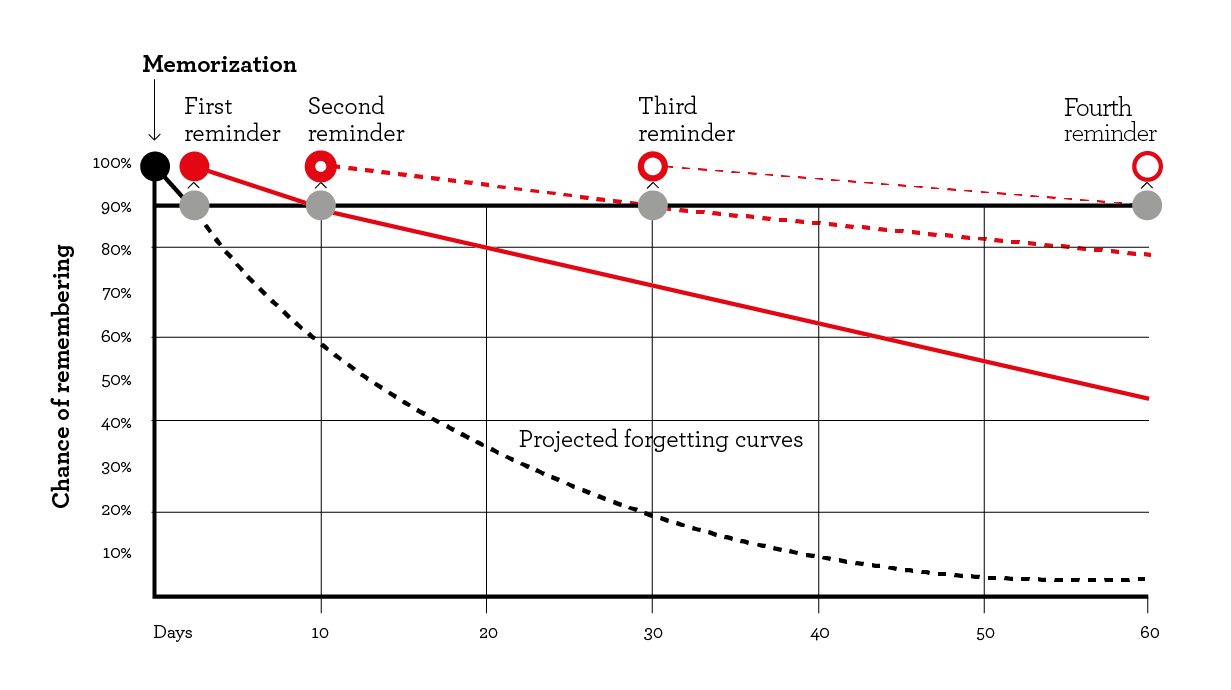Achieving success in academic endeavors requires efficient methodologies for learning and retaining knowledge. One such method is the concept of optimal learning intervals. This post will take you through this systematic approach to learning, elucidating the principles behind it, including the theories of spaced repetition and active recall.
What are Optimal Learning Intervals?
Optimal learning intervals refer to how frequently one should revisit and review material to aid memory retention. Eric Kandel’s work on the physiology of memory, awarded the 2000 Nobel Prize, demonstrated that frequent, spaced repetitions of information lead to stronger neural connections (Kandel, E. 2000). Presented in these terms, it becomes evident that cramming, a common practice among students, is not the most effective approach to learning.W
Applying optimal learning intervals begins with the primary study session, where you endeavor to understand the material. Subsequent reviews should then follow at strategic intervals – ideally, within a day, then spaced out further in longer increments (Cepeda et al., 2008). This principle of increasing the interval between reviews is pivotal in ensuring the best long-term retention.
Embedded in this methodology is the concept of spaced repetition, based on the ‘Spacing Effect’. The Spacing Effect, a phenomenon first identified by Hermann Ebbinghaus in the 19th century, suggests that we learn more effectively when our study is spread out over time, rather than concentrated into short, intense periods (Ebbinghaus, H., 1885). By revisiting study material at increasing intervals, one ensures that neural links to the learned information are strengthened regularly, increasing the probability of information recall in the future.
Active recall is another crucial element of the optimal learning intervals method. It is a strategy of learning that involves actively trying to remember information without looking at the text (Karpicke, J.D., 2008). For instance, after reading a chapter, close the book and write a summary, in your own words, of what you’ve understood. By doing this, you’re retrieving the information from your memory, which in itself is a powerful act of cognitive reinforcement.
Ensuring optimal learning means understanding the rhythms and cycles of memory retention and applying strategies tuned to these rhythms. If students incorporate optimal learning intervals into their study routines, they will find that not only does their grasp improve, but over time, they will need to spend less effort on revision as the information becomes more firmly entrenched in their memory.
In conclusion, optimal learning intervals provide the systematic spacing needed to strengthen neural connections and improve memory retention. By adopting this approach and coupling it with the principles of active recall, students can significantly enhance their learning efficiency and academic performance.
Remember, genuine understanding and long-term retention are a result of consistent, focused study over time, not last-minute cramming. “I’ve learned that I still have a lot to learn,” the brilliant Maya Angelou once opined. These words echo the cornerstone of any successful student’s approach to their education: passionate curiosity and continuous learning. It’s optimal learning intervals that can help us all go a long way in achieving that.


